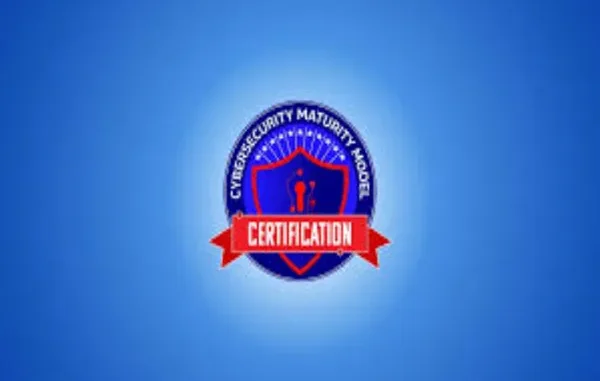
Cyber threats are more sophisticated than ever, and if you’re a defense contractor – you have an obligation to protect government information.
The Department of Defense (DoD) is serious about cybersecurity. Now, Cybersecurity Maturity Model Certification (CMMC) 2.0 compliance is mandated for contractors who work with Federal Contract Information (FCI) and Controlled Unclassified Information (CUI).
Just the thought of having to do a CMMC audit is too much for most. The framework is crazy, the mandates are ridiculous, and the risk is too high. In fact, failing an audit could mean losing lucrative government contracts.
But fear not! Achieving CMMC compliance doesn’t have to be a frightful experience.
Following a methodical approach, you can navigate through each step steadily, ensuring your organization meets necessary security controls and feels confident going into its assessment.
This post walks you through six important steps to effectively prepare for your CMMC audit.

1. Identify Your Required CMMC Level
Before you get started, you’ll want to know which CMMC compliance level applies to your organization. The new CMMC 2.0 framework has three levels, each with its own security requirements.
If your organization only handles general Federal Contract Information (FCI), a Level 1 certification that includes basic Cyber Hygiene practices will suffice. For organizations that handle Controlled Unclassified Information (CUI) from the DoD, a Level 2 certification is necessary. The Level 2 standards align with NIST SP 800-171’s set of 110 security controls.
The most advanced is Level 3, which applies to businesses handling extremely sensitive government data. Understanding your required CMMC level determines what type of security you should have. Misinterpreting that and not having enough certifications could put you in a non-compliant position.

2. Assess and Identify Your CUI and FCI
Once you’ve established the required CMMC level, the next step is to determine what type of data your company handles and where it resides. This is actually one of the most important parts of compliance, as the ultimate goal of CMMC requirements is to protect sensitive information.
Federal Contract Information (FCI) is information not intended for public release but provided for the Government under a contract. Controlled Unclassified Information (CUI) is more sensitive and requires safeguarding or dissemination controls.
You will need to assess the current information systems that store or process FCI/CUI data, document these locations, and identify whether or how the FCI/CUI data is transmitted through, processed in, or stored on your IT network(s).
It’s equally important to consider if the data resides within the cloud service provider environments and who has access to them. This evaluation will identify potential security risks and help you refine your cybersecurity strategies to align with CMMC requirements.
3. Conduct a Gap Analysis against NIST SP 800-171 Rev 3
Now that you know what data you have, the next step is to do a detailed gap analysis against the security controls defined in NIST SP 800-171 Rev 3. This is the base framework for MMC Level 2 and a requirement for any organization handling CUI.
Often, a gap analysis will assess current security controls and practices against a desired set of controls. In this sense, you are identifying vulnerabilities in your environment—hopefully, before an auditor does—that allow an attacker to access data due to weak access controls or unpatched system software.
Develop a plan for remediation when gaps are found. Some problems can be solved easily, such as purchasing firewalls, while others may require modifications to existing network architecture, developing new policies, or even defining plans for periodic reassessment and enhancement.

4. Develop a System Security Plan (SSP) and Plan of Action and Milestones (POA&M)
CMMC compliance is heavily focused on documentation. A System Security Plan (SSP) is a detailed document that explains how your organization safeguards FCI and CUI. It includes security controls, policies, and procedures and also serves as a checklist for auditors to assess your organization’s cybersecurity maturity.
Alongside the SSP, you need to develop a Plan of Action and Milestones (POA&M). This document lists any deficiencies you uncovered as part of your gap analysis and the steps your organization will take to correct them. It includes timelines, responsible personnel, and the specific actions required to close security gaps.
5. Implement the Necessary Security Controls
Once you have identified gaps and developed a plan to close them, the next step is to implement the necessary security controls. At this point in the roadmap, you will begin deploying technical and procedural safeguards intended to improve your cyber security posture.
On the technical side, this could include firewall upgrades, MFA implementation, encryption of sensitive data, and securing endpoints from potential cyber threats. You may also require network segmentation to isolate CUI and FCI from insecure areas.

6. Engage a Certified Third-Party Assessor Organization (C3PAO)
Finally, you’ll need to go through the official CMMC audit, which is performed by a Certified Third-Party Assessor Organization (C3PAO). This will confirm that your security controls meet the required CMMC level and that you are ready to process FCI and CUI.
During the audit, they will examine your documentation, test the operational effectiveness of your security controls, and interview key personnel to determine whether your organization has implemented the required practices in a manner that is likely to be sustained over the long term.
Final Thoughts
Complying with CMMC is more than passing an audit and building a resilient cybersecurity program to protect vital Government data. If you follow the steps outlined—understand what CMMC level you need to meet, find and categorize your CUI and FCI, do a gap analysis, develop SSP and POA&M, implement the controls you need, and contract with a C3PAO—compliance shouldn’t be too hard for you.
A well-organized approach will ensure your company meets the DoD’s regulations and improves its security. Overall, CMMC compliance is a continuous process, and if you implement these steps into your cyber security strategy, you will safeguard your business and defense contracts for the long term.

Leave a Reply